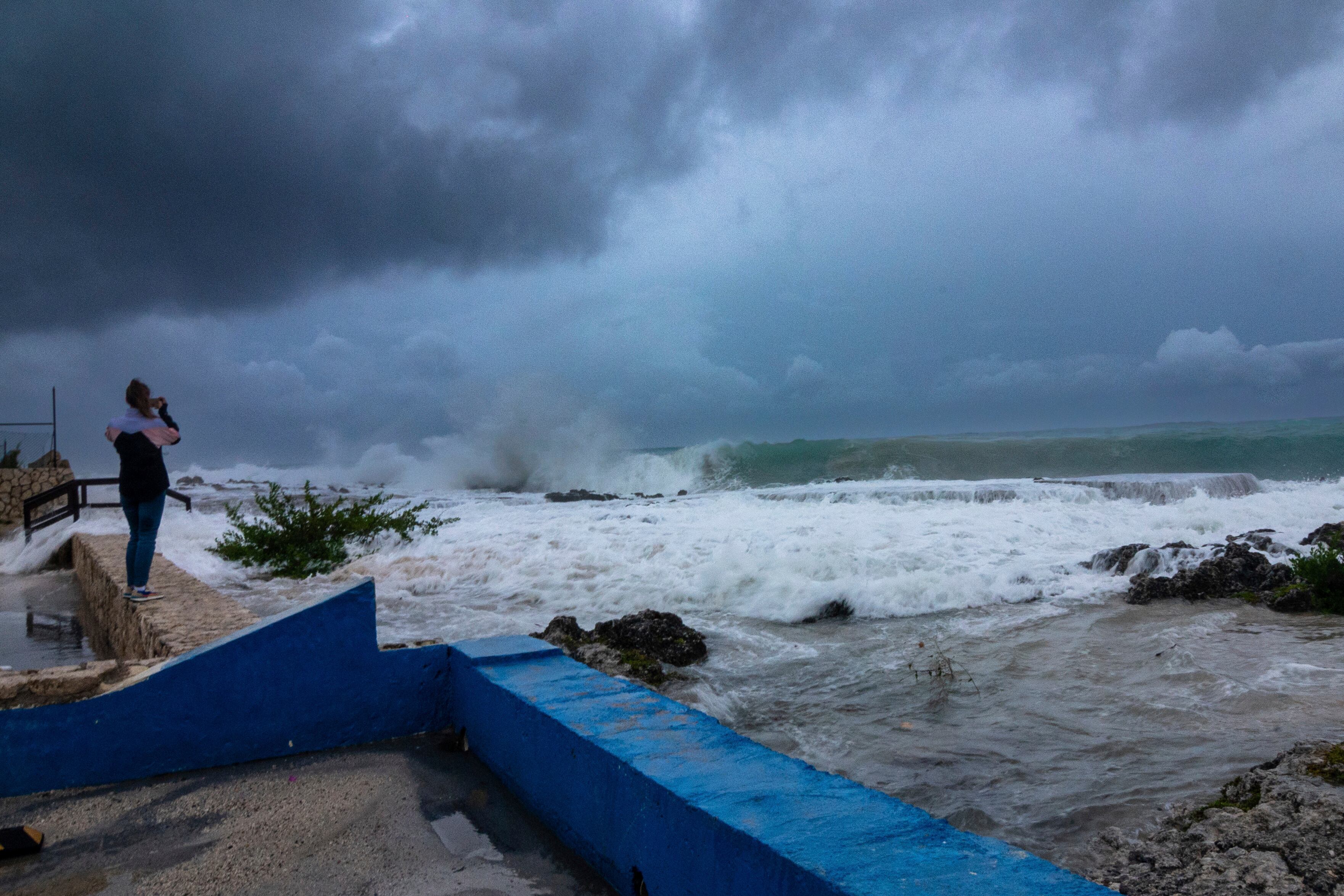On Sept. 25, after consulting with local and regional leaders and the National Weather Service, Veterans Affairs made the decision to evacuate all inpatients from its Bay Pines VA Medical Center. While VA’s regional team was still recovering from Fiona, the Category 1 hurricane that devastated Puerto Rico just a week earlier, and it was clear that Hurricane Ian was bearing down on Florida’s Gulf Coast with expectations that it would be a Category 4 when it reached land.
Over the next few days, staff at Bay Pines moved 152 veterans who were in hospice, domiciliary, acute and long-term care — and in Ian’s projected path — to other VA medical centers across the state, including Orlando, West Palm Beach and Miami.
Most of the evacuated patients were brought back at Bay Pines. But one veteran didn’t return to the hospital. Instead, this hospice patient who rode out the hurricane at the West Palm Beach VA Medical Center was granted his final wish — to pass away at home surrounded by loved ones. After initially being unable to find an ambulance to bring the veteran home, staff at West Palm Beach VA worked to secure airlift transportation and he was taken to his home in Clearwater to spend his remaining days with his family.
VA is here for the safety and wellbeing of veterans and our employees, and we view our emergency response function to natural disasters through that lens. Through years of extensive planning and preparation — and real-time coordination — that is exactly what we achieved following hurricanes Fiona and Ian.
VA’s Emergency Management Coordination Cell was active, working on plans, logistics and expert guidance to support continuity of care and potential for VA assignments to support non-VA resources in the community that might have resulted from the high winds or flooding related to the hurricane.
Providing care to more than 1.5 million veterans across the State of Florida, parts of South Georgia, Puerto Rico and the Virgin Islands, VA’s Sunshine Healthcare Network is well-tested in hurricane preparedness and response. This team has experienced past storms and has participated in extensive education, training, drills and live exercises.
Leveraging the strength of the nation’s largest health care network, VA ensured that facilities directly in Ian’s projected path were equipped to take appropriate action. These steps included the rescheduling of elective procedures where possible, limiting admissions unless necessary, expediting discharge for those who were clinically ready to leave and ensuring critical supplies were adequate to maintain continuity of operations.
Our teams contacted more than 10,000 veterans we had identified as vulnerable to ensure they had the care and medication needed in advance of the storm. We also provided key staff to travel with evacuated patients, while keeping other clinical staff onsite at locations where patient care was needed during and after the storm.
Ian made landfall about 95 miles south of Bay Pines just days after we moved patients to other VA locations. While tragically more than 100 people have been reported killed by Hurricane Ian in Florida, none were veterans in our care or our employees.
Thanks to preparation and quick response, most of VA’s clinics remained online or were fully operational within a day or two. Several of our clinics were in the direct path of Ian and each had some minor damage or were impacted by lack of municipal power and water. These include the Lee County Healthcare Center, Naples clinic and Port Charlotte clinic on the southwest coast, and Daytona Beach clinic on the central east coast. Even those were fully operational within two weeks from when Ian made its historic landfall near Punta Gorda.
While Ian packed stronger winds, Hurricane Fiona was the first major storm of the season, battering Puerto Rico with torrential rainfall, up to 30 inches in some locations. Fiona made landfall almost five years to the day that Hurricane Maria ravaged the island.
Having faced hurricanes and earthquakes, VA’s team in the Caribbean has an emergency response program that is second to none. Challenges remain across much of Puerto Rico, though VA was able to get all but one of its clinics on the island up and running within days. VA’s multi-specialty care clinic in Ponce was significantly damaged by flooding and VA has deployed multiple mobile units and shelters to support patient care on site.
VA has again reached out to those 10,000 vulnerable veterans to ensure they made it through the storm, and thankfully they all have. We continue to work with local, state and federal partners, including FEMA, to provide information and support to veterans and employees. Communication has been ongoing, with messages to Veterans and staff before, during and after the hurricanes hit. Status updates are being posted to VA’s website regularly and veterans who’ve subscribed to receive emails automatically receive the updated information.
VA employees consistently demonstrate their commitment to the veterans we serve even when experiencing personal loss. We could not be more proud of their efforts and determination. Hurricane season extends to the end of November and because providing safe, timely access to care is our mission, we remain at the ready.
Dr. Shereef Elnahal is VA’s under secretary for health. He leads the Veterans Health Administration, the largest integrated health system in the nation, managing a budget of more than $102 billion and overseeing the care of 9 million veterans. Elnahal is a physician leader who previously served as president and chief executive officer of University Hospital in Newark, New Jersey, from 2019 through 2022.
Tammy Czarnecki is deputy assistant under secretary for health for operations in the Veterans Health Administration. She serves as the principal advisor to the assistant under secretary for health for operations, directing the day-to-day operations of VHA’s 18 Veterans Integrated Service Networks, Member Services and Office of Emergency Management.





